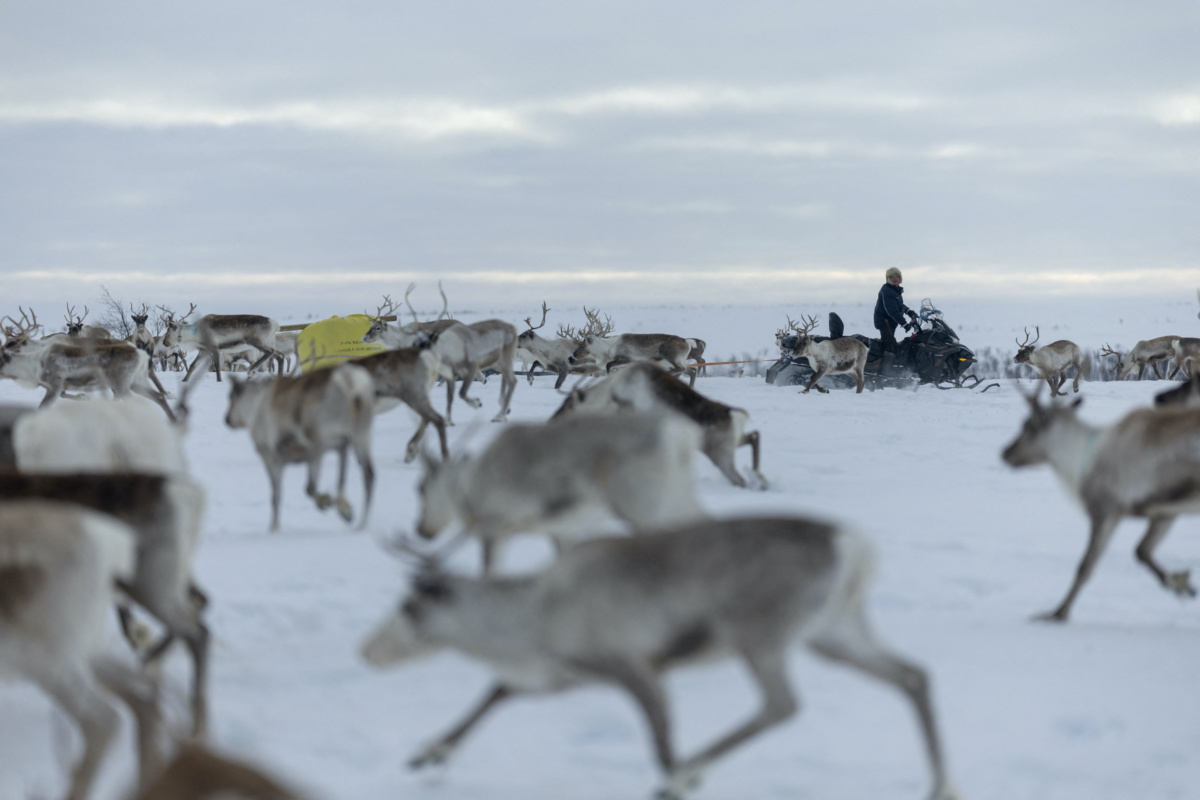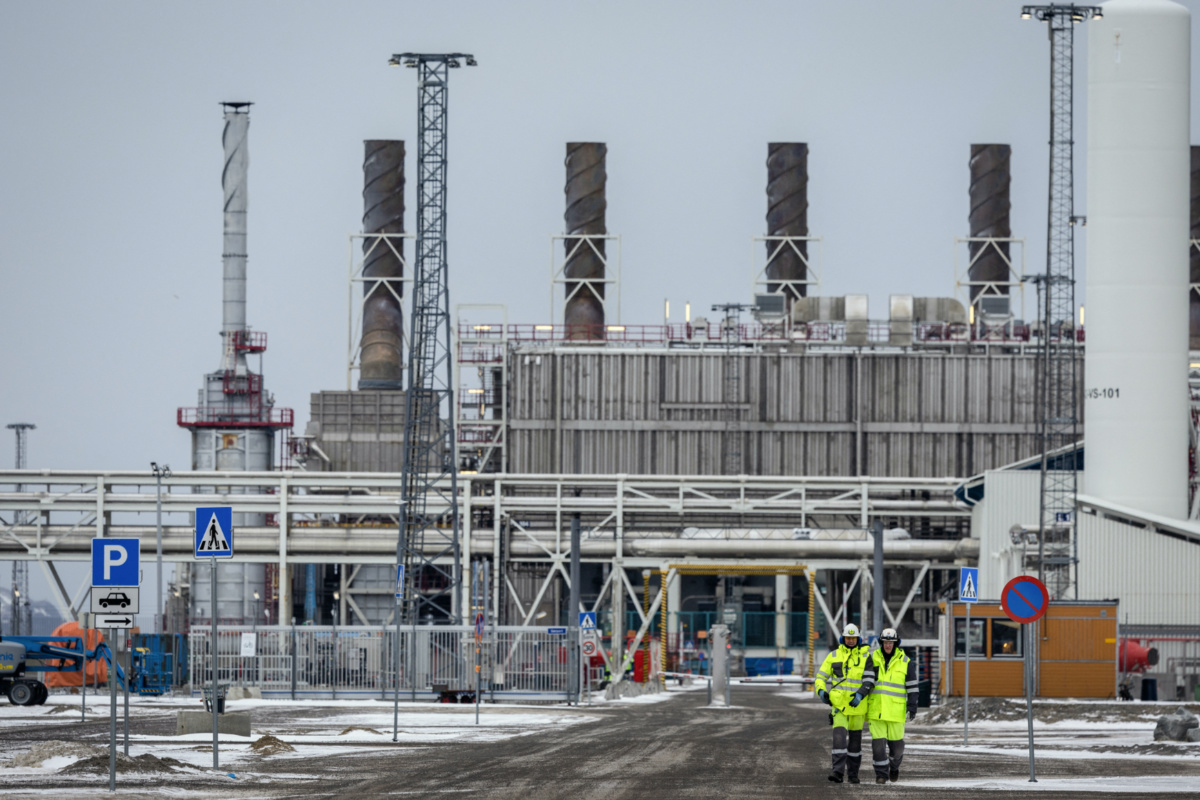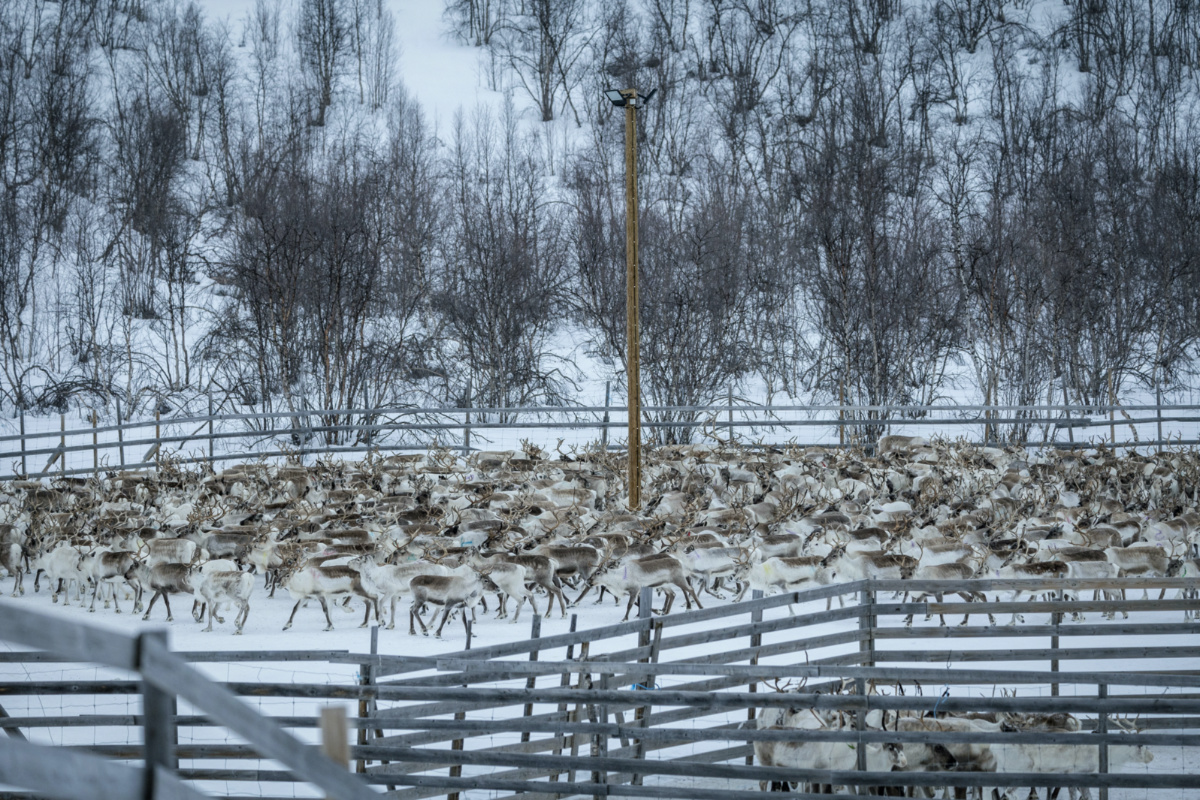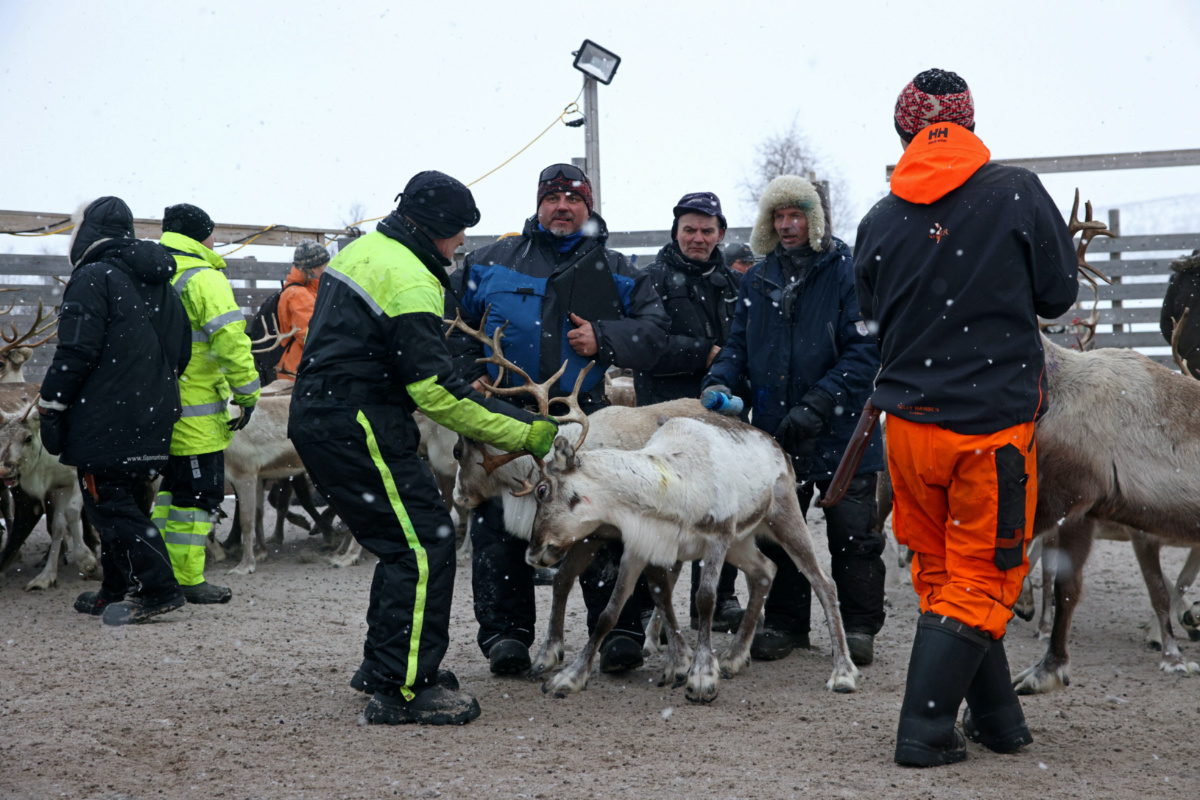
GWLADYS FOUCHE, of Reuters, report on concerns among Sami herders over a planned power line to supply Western Europe’s largest liquefied natural gas plant…
Jergul, Norway
Reuters
It is minus six degrees Celsius in Arctic Norway and some 30 Indigenous Sami herders have gathered 1,500 reindeer in a corral, sorting who owns which animal after the herds mixed while grazing up on the Finnmark plateau.
It is also an opportunity to discuss their big worry: a planned 54 kilometre power line to supply Western Europe’s largest liquefied natural gas plant.

Sami reindeer herder Nils Mathis Sara, 65, rides a snowmobile with a sledge spreading supplementary feed pellets for his reindeer herd near Geadgebarjavri up on the Finnmark plateau, Norway, on 13th March, 2024. PICTURE: Reuters/Lisi Niesner
The line will be built on pastures the herders use in summer, in coastal areas where they say towns, cabins, roads, existing power lines and other infrastructure have already encroached on the land they use.
“We cannot afford to lose more summer pastures,” said Nils Mathis Sara, whose herd graze between May and October in the area where the line is due to be built this summer.
“We have nothing else to give away.”
– Nils Mathis Sara, whose herd graze between May and October in the area where the line is due to be built this summer.
“We have nothing else to give away,” he said as he drove to the corral in Jergul, near the winter pasture on the plateau, some 1,700 kilometres from the capital Oslo.
As the temperature rises from the current six degrees Celsius, they make the preparations to move to the summer pasture, 250 kilometres away near the city of Hammerfest.
The power line will help Norway cut its CO2 emissions, with the government committing to cut the country’s emissions by 55 per cent compared to 1990 levels by 2030.
With electrification, Hammerfest LNG would use renewable power from the grid – most of Norway’s electricity production comes from hydropower – instead of gas to run its five turbines.
The Equinor plant is the second-largest single source of emissions in the country, generating some 850,000 metric tons of CO2 per year, or two per cent of Norway’s annual emissions.
It exports enough gas to cover the consumption of an estimated 6.5 million homes, mainly in Europe. The electrification would help prolong the production life of the field and export more gas to markets.
The conflict illustrates the difficult choices countries must make to cut greenhouse gas emissions and power future growth, often involving competing use for land.

Workers walk along a road at Western Europe’s largest liquefied natural gas plant Hammerfest LNG, in front of its five chimneys that release emissions from its gas turbines, in Hammerfest, Norway, on 14th March, 2024. PICTURE: Reuters/Lisi Niesner
In time, Hammerfest LNG is due to use power from onshore wind farms that authorities want to build to increase the power supply to Finnmark as a whole, and Hammerfest LNG in particular, the region’s future biggest power user.
They are due to be built on reindeer summer pastures too.
“It is idiotic we are going to destroy nature for the climate,” said Johan Isak Eira, a reindeer herder from a district where one such windfarm is expected.
The government disagrees.
“We need to create new jobs, enable more economic activity. Future jobs will rely on clean energy, not diesel-powered generators,” Deputy Energy Minister Elisabeth Saether said.
“For this government, it is not an option to give a categoric ‘no’ to new power and new power lines in reindeer herding areas.”
She said the Skaidi-Hammerfest power line would have an impact on herding, but the activity could take place in line with article 27 of a 1966 international treaty protecting Indigenous minorities’ rights to enjoy their own culture.
In a landmark ruling in 2021, Norway’s Supreme Court said that right was being violated with the construction of two onshore windfarms in central Norway, leading to protests from Sami groups, green activists and Greta Thunberg. The windfarms remained but the herders were awarded compensation and the promise of land.
“This is not such a big hindrance that herders will be unable to practice their culture,” Saether said.

Reindeer circle inside a corral as Sami herders gather some 1,500 reindeer to identify, separate and return them to their owners after their herds mixed together while grazing up on the Finnmark plateau, in Jergul, Norway, on 12th March, 2024. PICTURE: Reuters/Lisi Niesner
Reindeer herders disagree. Sara’s reindeer district group, which numbers around 100 herders, is planning legal action to stop construction of the line. The herders say the impact of the power lines will disrupt the natural behaviour of the animals.
“Reindeer avoid the area where power lines are built. You can make them pass under, but they won’t stay there,” herder Eira said. “The structures make them afraid and they don’t like the sound they make.”
Female reindeer calve on summer pastures and the young eat grass to build up enough weight to survive on lichen on winter pastures, when temperatures can drop to minus 40 degrees.
Herders are under pressure on several fronts, including from climate change. They now have to supplement the animals’ feed as milder weather has resulted in ice layers forming from rain showers that then freeze – meaning the reindeer cannot always dig for the lichen with their hooves.
We rely on our readers to fund Sight's work - become a financial supporter today!
For more information, head to our Subscriber's page.
Statnett, the grid operator and the builder of the power line, said it “would deliver a sustainable project that takes care of both people and nature” and said power lines when put into operation only affected the reindeer “to a limited extent”.
Equinor, the operator of Hammerfest LNG, says it understands “the uncertainty” faced by herders.
“There could be dilemmas when we are developing energy infrastructure close to the reindeer herders,” said Kjetil Myklebust, the head of the project at Equinor.
“Still, we are confident that it is possible to develop the region’s grid in good dialogue with the affected parties.”
On the land it is responsible for, close to the plant, Equinor will build a power cable in a tunnel under Hammerfest, rather than above ground, so that it does not affect summer pastures there.

A group of Sami reindeer herders separate and mark reindeer inside a corral after their herds mixed together while grazing up on the Finnmark plateau, in Jergul, Norway, on 12th March, 2024. PICTURE: Reuters/Lisi Niesner
More broadly, herders say society should reduce consumption or find alternatives to cut emissions, such as carbon capture, which the government rejected as too expensive.
“What I don’t get about the energy transition is that to make it happen, we need to destroy nature,” said Sara. “To me that does not make sense.”




